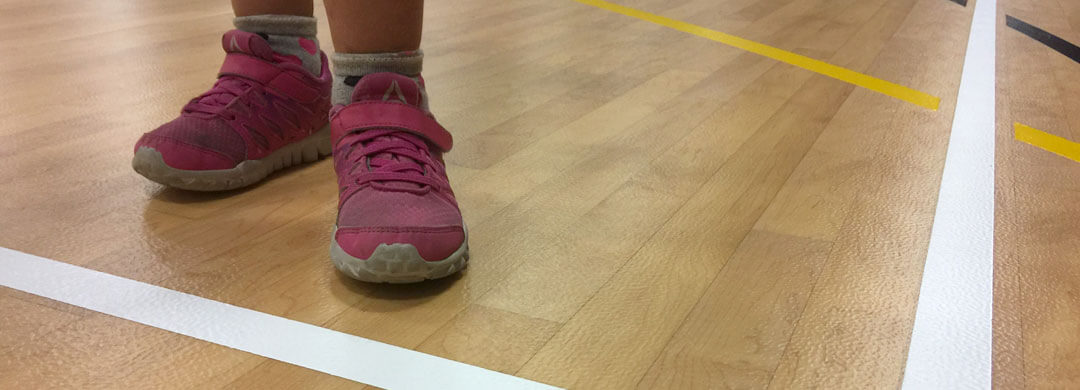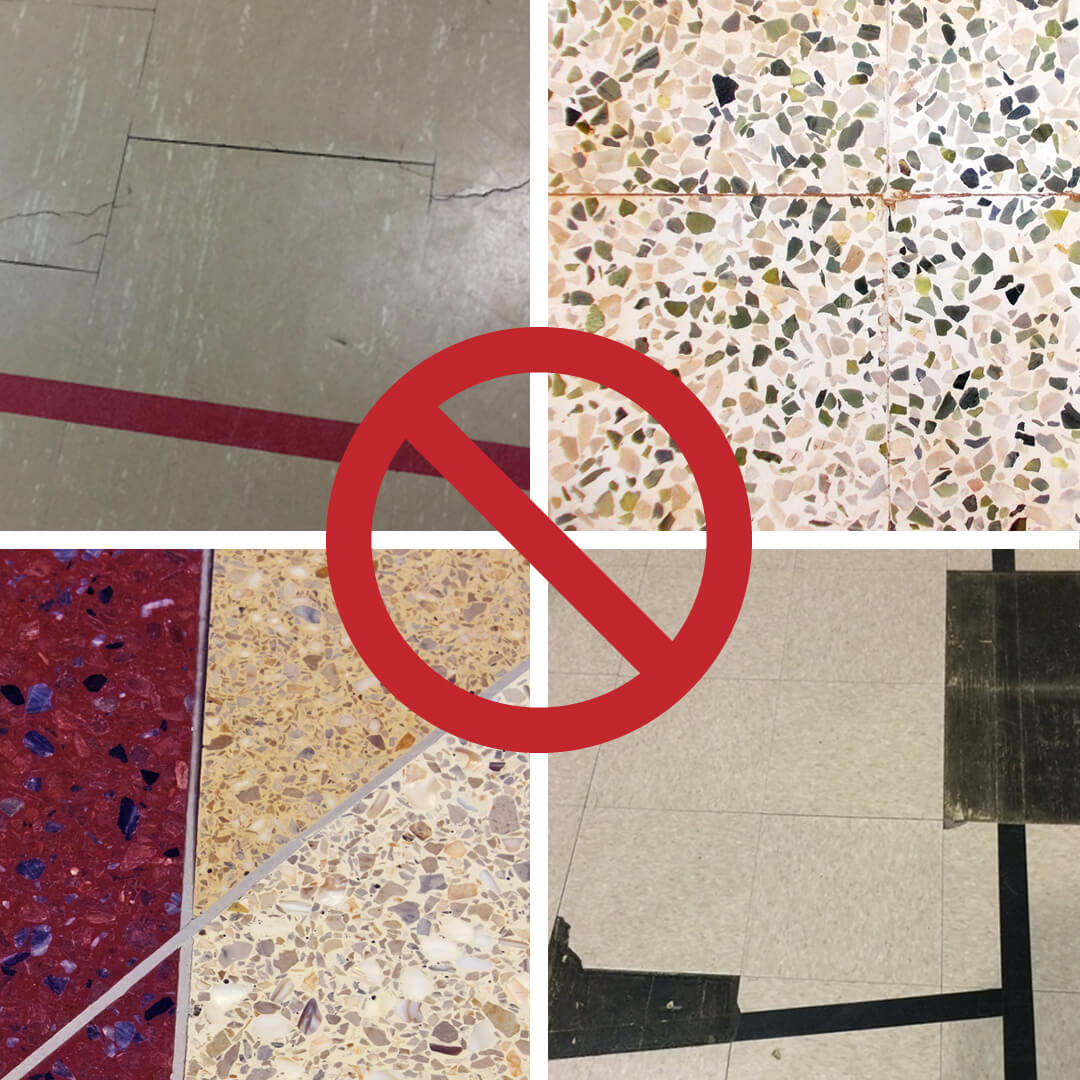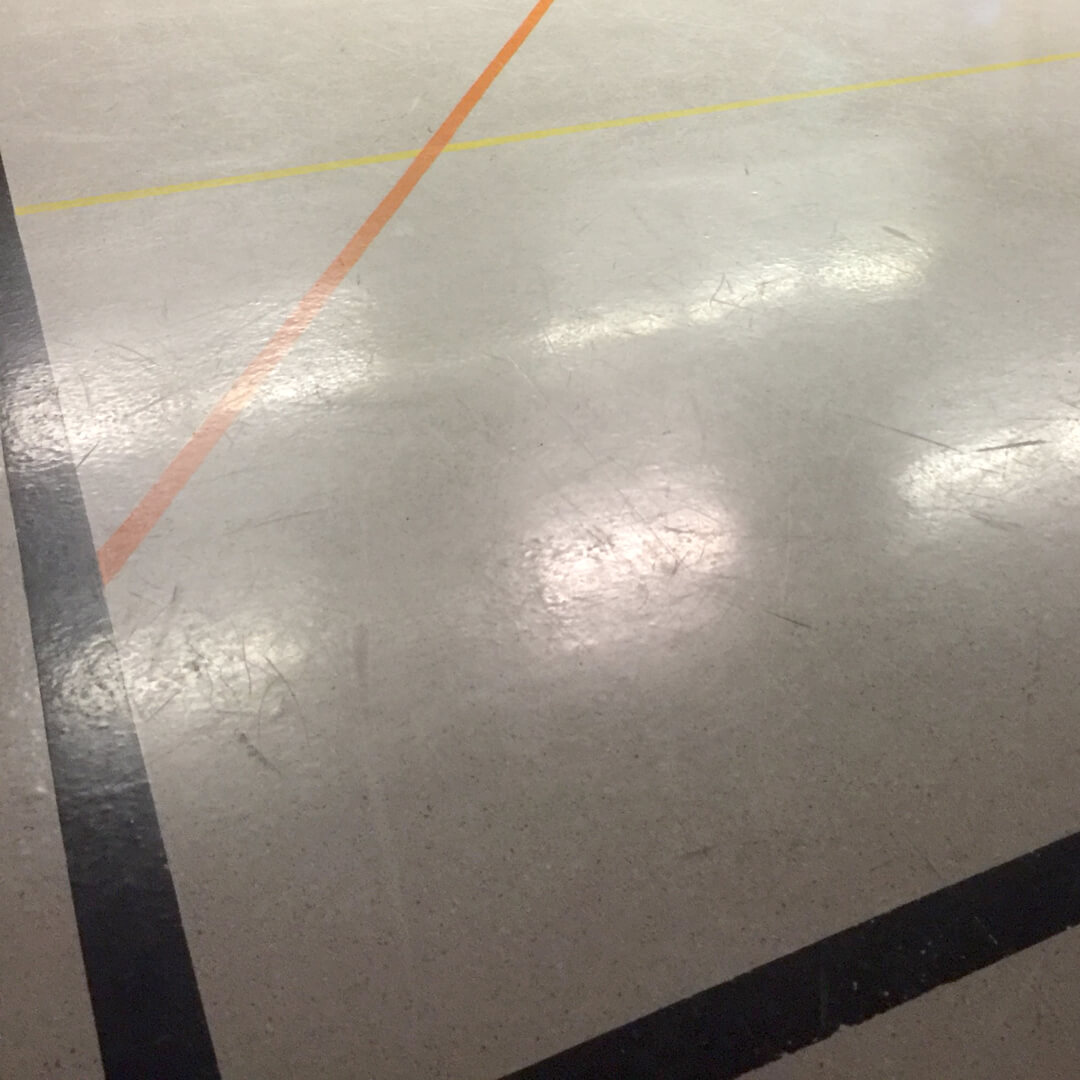
Growing feet need a durable, stable, resilient surface to keep safely growing on, no matter how physically active they are.
Whichever type of flooring your gymnasium has at the moment, there are some general points that must be considered to evaluate whether it’s time for a change.
1. Outdated flooring materials
The flooring used in sports settings such as school gymnasiums has seriously evolved. Many older educational institutions were built with only very ordinary flooring. Today, there exists specialized sports flooring that is designed with athletic performance, health, and safety in mind.
No resilience (hard)
If your gymnasium is made of VCT tiles, terrazzo, commercial rubber or other dense material, it is now known that these surfaces are too hard for physical activities. These athletic areas require a floor that offers resiliency first and foremost for shock absorption to protect the athlete’s joints.
Slippery
Running, jumping, and stopping are common moves in a gymnasium. When the space is used for the practice of sports or other types of physical activity, slippery floors can easily lead to injury.
Heavy maintenance
Many flooring systems need a lot of maintenance over time. They may be hard to clean and could require labour-intensive and time-consuming stripping, waxing, or refinishing increasing the life cycle cost. There are now functional floors designed for gymnasiums that hold a long-term low maintenance investment.
2. Worn wear layer
A gymnasium’s sports flooring must endure considerable wear and tear as it gets beaten up daily with a lot of action. Wood floors (either hardwood or engineered hardwood) may require sanding and refinishing. For other types of flooring, however, if the wear layer is worn through, it is time to change to a new sports floor.
3. High relative humidity
We must pay attention to the humidity levels of every gymnasium environment. Flooring reacts to the moisture levels in the concrete slab below and the surrounding indoor air. Too much humidity or trapped moisture contributes to swelling, creating bubbles, mold, and bacterial growth. The floor covering material can also expand with incorrect humidity levels and the built-up pressure can create cupping, warping, and buckling. The variation in relative humidity may even make some flooring brittle, resulting in gapping, cracking, and splitting. Therefore, it is important to select the appropriate sports floor for the project and have a plan to dissipate any excess levels of moisture.
4. Damage
When we do physical activity, the sports flooring needs to be in good condition. Surely, if it is visibly damaged, the surface will be unstable, and dangerous, not to mention unattractive! Also, any attempt at maintenance can lead to water infiltration, making the state of the flooring even worse. When it is determined that the floor has become dangerous, it will need replacing.
5. Inaccurate game lines
Different sports federations sometimes make changes in the design of the court game lines that are applied to the gymnasium floor. So updating the nonconforming lines will be necessary to match these new standards. Although some types of flooring may need a complete replacement for this kind of change, others such as hardwood can be sanded down to receive new game lines and be refinished.
Because these points may be difficult to evaluate depending on your current flooring, contact our experts to discuss your specific situation and to determine the work that could be considered.


